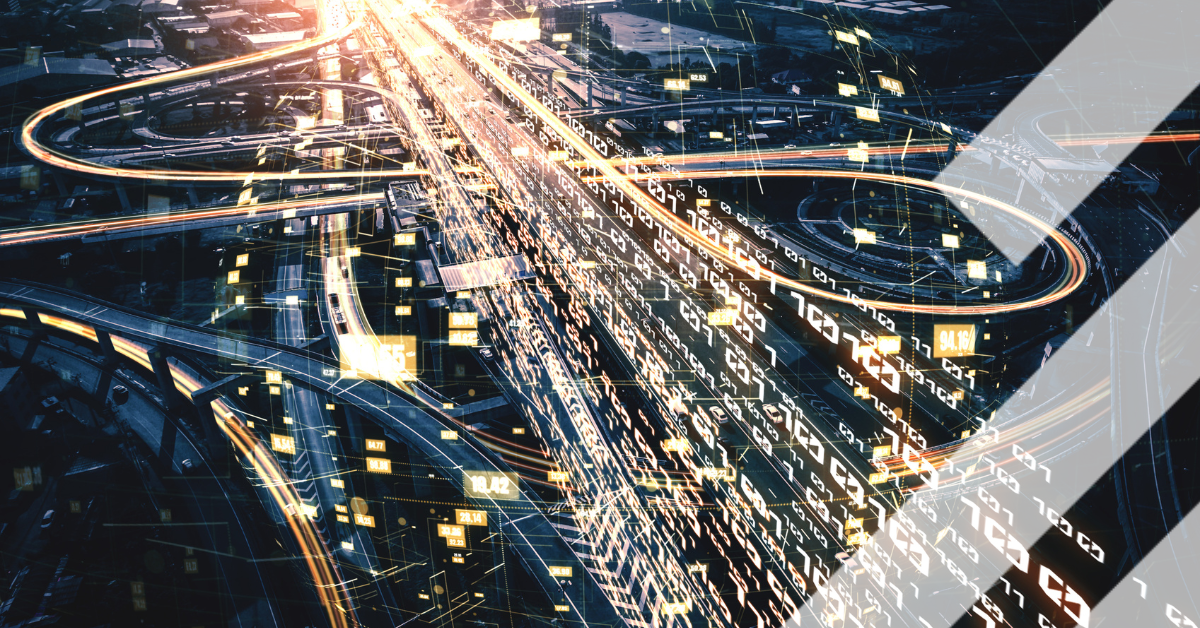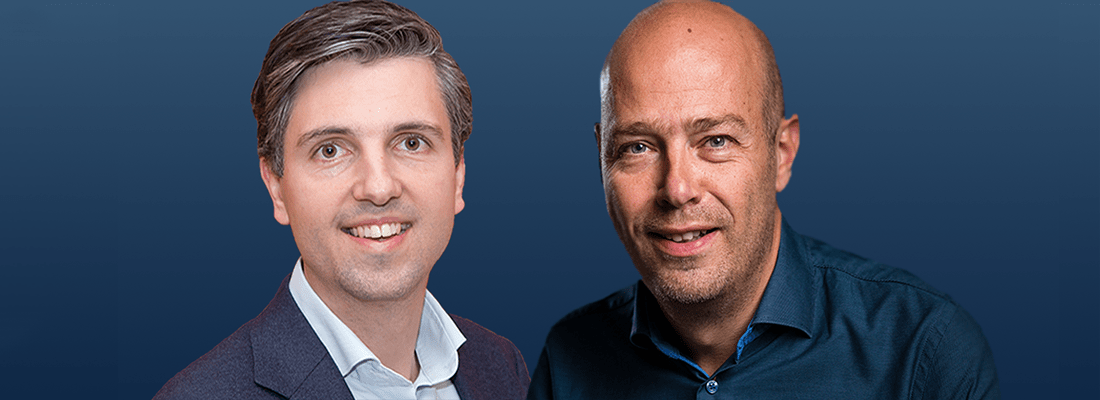‘Let’s implement existing ITS solutions instead of waiting for the next innovation.’
With the continuous growth of the population and ongoing urbanization there are numerous mobility challenges. Sustainability, safety and societal impact are amongst our daily concerns. We need to speed up the mobility transition to keep up with the fast changing global dynamics, which requires inventive approaches and better solutions. In this series we share inspiring and innovative cases from all over the world. Monotch and Dynniq recently announced a partnership to smarten data flows in infrastructure. How do they speed up the mobility transition?
The use of mobile equipment and the emergence of the Internet of Things offers unprecedented opportunities for smarter organisation of mobility. With the use of data technology, people and systems can communicate and share information with each other. Similarly, Cooperative ITS realises communication between vehicles and infrastructure to better inform road users, prioritise traffic and optimise traffic flows. With a global partnership, Dynniq and Monotch join forces to make existing technology even smarter and to accelerate further rollout. Intertraffic spoke to Menno Malta, CEO at Monotch and Joost de Ruiter, Managing Director at Dynniq.
‘Our aim was to make sure C-ITS would be about greater scale deployments’
Menno Malta: ‘We started Monotch in 2016 to connect the roadside systems to the road user. In-car information helps road users make better decisions and information about traffic is used by road authorities to manage traffic more efficiently. At the time we saw a lot of similar projects but never with wide scale implementations involving large amounts of users. We developed a platform called TLEX I2V which makes sharing data easy. We needed to focus on technical improvements and pay attention to ownership, quality, price and scalability. Our aim was to become experts in that specific part of the chain and make sure C-ITS would be about greater scale deployments instead of smaller proof of concepts.’
‘The partnership is but exclusive; we invite more parties to connect all devices and techniques by sharing data.’
‘Of course we came across technical challenges. We wanted to send billions of messages in milliseconds. Above all we needed more parties to work together and make sure every party or organisation was willing to share their information. The entire system would not work at all if you did not get the same information as soon as you entered a different city or village. This makes the partnership with Dynniq so important. However, the partnership is but exclusive; we invite more parties to connect all devices and techniques by sharing data.’
‘The TLEX (traffic live exchange) platform enables roadside equipment to connect with road users. For instance in The Netherlands a smart intersection tells us what happens every second and we provide this info to navigation applications for their users to be informed on the best route to take. In return we receive anonymous data to share with roadside devices and improve traffic flows. In this case the government is owner of the data coming from infrastructure objects and the owner of the navigation application is owner of the data coming from its users. Our challenge is to involve more local governments to make sure an ambulance also receives priority when it enters a new city, village or region.’
‘In the long run this platform will improve our connections in autonomous driving, but already we experience success. The Netherlands asked us to connect all smart objects by connecting data to improve traffic flows, safety, priority for ambulance, tire pressure of trucks, etcetera for the next four to six years. Adding new objects and connecting those to others is technically quite easy. If we are able to give priority to an ambulance, we can easily inform a driver the ambulance is approaching or enable it to enter a camping ground even. We have built the platform and now it is up to all parties to make use of it.’
‘What drives Monotch is to be able to have a positive effect on as much people as possible. Everything is in place to make our roads safer, smarter and more sustainable. Now we just have to do it! And I am convinced it is within reach.’
‘The combined market-ready solutions make a significant contribution to traffic prioritisation, traffic optimisation and real-time information to road users. We got rid of a lot of barriers and now it is time to focus on improving and scale up across Europe. Thanks to this partnership we can make the industry smarter and speed up C-ITS developments in Scandinavia, UK, Belgium and many other countries. Dynniq facilitates that their traffic light controllers are connected with the central platform.’
Joost de Ruiter is Managing Director at Dynniq. Dynniq develops, installs and maintains advanced ITS technology that helps governments to manage mobility flows. Its mission is to enable people, data and goods to reach their destinations safely, sustainably and efficiently. Its technology is used in over 30 countries with offices in The Netherlands, United Kingdom, Belgium, the Nordics, Poland and Croatia.
‘I believe the real essence is making people happy by offering a much more comfortable journey.’
‘The goal of smart mobility is to make travelling safer, more sustainable and more efficient. On top of that, feedback from users of our smart mobility GreenFlow services shows that it gives them a better experience, making it more comfortable and enjoyable. Imagine that you can communicate digitally with traffic lights. Getting real-time and accurate speed advice information in your vehicle so you know exactly how fast to drive in order to get a green flow. It is even possible, for example for ambulances to request priority and safely cross the intersection. Other examples are to increase the green time of a traffic light for disabled people or groups of school children under the supervision of a teacher. All enabled with a simple application on their mobile phone. Communicating with traffic lights, enabled by the TLEX of Monotch.’
‘We had completely underestimated the importance of the human side of ITS innovations.’
‘Not only road users benefit from the Smart Mobility services. Cities and road authorities get much more tools at their disposal to manage traffic flows. Let’s say there is a certain route that is used by trucks a lot. The route however passes schools and residential areas. With the use of the TLEX, road authorities can create a green corridor for trucks on an alternative route. Giving truck drivers a positive incentive with which the truck driver tends to choose this road instead. This results in less congestion and better traffic flows. The soft side of a comfortable and happy journey is very important to the driver, maybe even more important than the technical improvement which saves fuel or decreases travel time. This was a surprising outcome of the pilots that we executed. We had completely underestimated the importance of the human side of ITS innovations.’
‘The incentive can differ per city or driver and every culture or country asks for a different approach. In the Netherlands we always talk about traffic flow and efficiency, whereas abroad they use the same technology but offer a red light when someone exceeds the maximum speed limit. In many cities in India the traffic lights have a LED-display with a countdown timer to show in how many seconds the light will turn to green. Very interesting to see these different use cases with different outcomes, and the fact that it is all possible with the same underlying technology.’
‘Let’s implement existing solutions and grasp the benefits instead of always waiting for the next innovation.’
‘Yes, I want to speed up the mobility transition. We can make this possible by implementing the solutions that are already at our disposal. Road users deserve the improvement of safety, efficiency, sustainability and happiness that can be created. As mobility professionals, I think we should not wait for the next big innovation without using what we already have. We need to make use of this opportunity and improve data sharing together.’
'The partnership with Monotch shows that we are willing to work together and give more parties in the market the opportunity to speed up the mobility transition. I invite everyone in the ITS business to join.’
‘I know it is possible. Only two decades ago at high school I had to dive into dictionaries to translate a text into a foreign language. Word by word. Nowadays I take a picture of a text in a foreign language, and Google will translate it for me. Everything is possible! How easy our lives are yet to become thanks to technology?’
‘This is what I get out of bed for in the morning: making sure everyone can benefit from the ITS developments and making more road users happy. I wish the same for my children. Whether it means being driven by an autonomous vehicle or enjoying their own drive through the beautiful mountains. As long as they are happy.’




